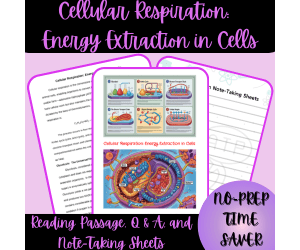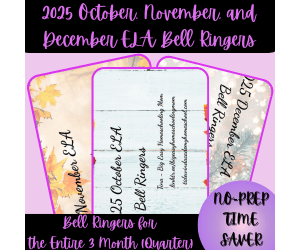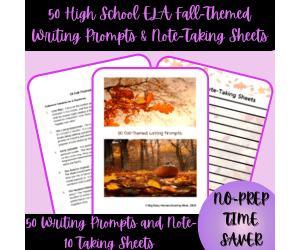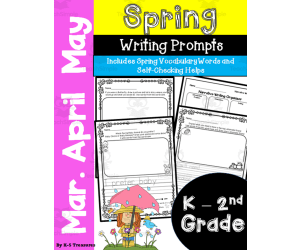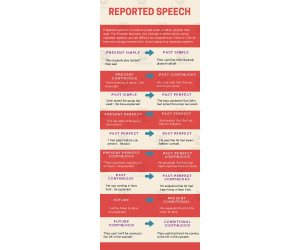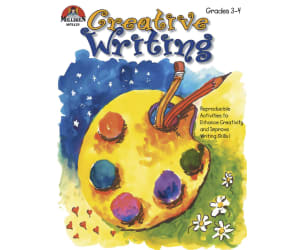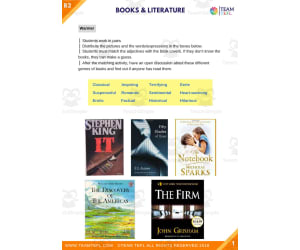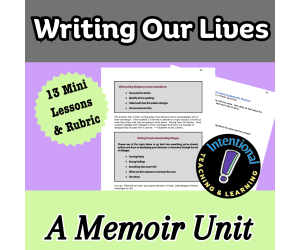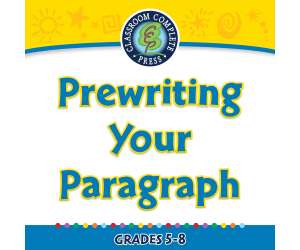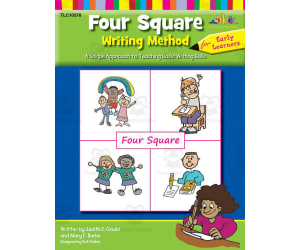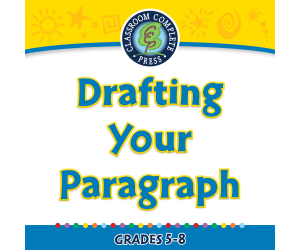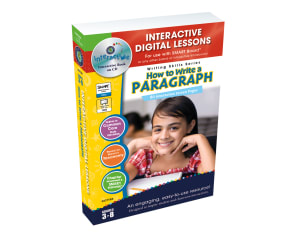2,750 products added recently
Writing Lesson Plans
Support your students in becoming proficient writers with lesson plans that cover various writing styles and purposes. These activities guide them through brainstorming, drafting, revising, and editing. Use these resources to nurture their ability to communicate ideas effectively and creatively.
Civics and Government 3rd Grade (15 Day) Unit
Social Studies, ELA, Government, Reading, Writing, Common Core, Grade 3, Lesson Plans, Teacher Tools
Are you introducing 3rd graders to the concept of government and its role in our communities? Through engaging activities, students will explore the differences among national, state, and local and state governments, understand the importance of laws and justice, and learn how governments function to serve the people. This 15 day mini unit includes day by day planning with suggested activities for differentiation. Typically used in a high ability classroom, it is appropriate for all students. Teaching methods used: Jigsaw learning, foldables, Nonfiction research, doodle notes, graphic organizers, group work, individual work, (suggested) guest speakers, and traditional assessment. Unit includes: Alignment page showing 3rd grade social studies state standards, Common Core Reading and Writing standards, and National Council of Social Studies Themes 15 day lesson plan broken into standard, reading/information source, and activities Vocabulary journal + answer key Jigsaw activity for three branches of government Foldable activity for civic virtues Sequencing activity for election process 7 nonfiction reading passages (+ answer keys) 2 Project Based Learning projects - Elect a Mayor and Design a City Rubrics for all projects and answer keys where applicable Traditional vocabulary quiz List of possible guest speakers Government focus: Since third grade is more community based, the content and projects focus mainly on state and local government. The branches of government and responsibilities of important people within the government include national organizations and expectations (i.e.: President, Congress, and Supreme Court). If it is an election year, the election activity can easily be adjusted to "Elect a President" instead of "Electing a Mayor." Tags: government, elections, legislative, executive, judicial, state and local government, city planning, citizen, civic duty, mayor File Type: PDF (not editable) Number of Pages: 53 (including curriculum plan and answer keys) Grade: 3 - depending on state standards, may overlap with second or fourth grade government content
Author Kel's Klass
Tags Government, Elections, Legislative, Executive, Judicial, State And Local Government, City Planning, Citizen, Civic Duty, Mayor
SUMMER ESL Writing Prompts and Drawing for K-2nd Grade
ELA, Language Development, ESL, Writing, Creative Writing, Research, Kindergarten, Grade 1, 2, Writing Prompts, Worksheets & Printables, Teacher Tools, Lesson Plans
This SUMMER ESL Writing Prompts and Drawing is perfect for Kindergarten through 2nd grade! You can use it for summer school, at home to keep your kids engaged and to practice up on their writing skills, and a fun way to inspire creativity in your child or student. The prompts that are differentiated for all writers. All students are different learners and there are pages for beginner writers and more advanced writers. These pages encourage them to have guidance as they check off the boxes for sentence structure, punctuation, spelling, word spaces, and capitalization at the beginning of each sentence. This packet also includes writing organizers, and a page to draw and color to add to their writing. Included are 7 Journal Prompts: •Write about Summer Activities •Write about your Favorite Summer Food •Write about Summer Vacations •Write about Relatives to Visit •Write about 4th of July Activities •Write about Beach Activities •Write about Camping Activities It's a GREAT value with fun festive borders to display in your classroom or at home, plus you can put it all together into a book. This is an AMAZING activity to promote creativity in your students and engage them in writing! It is also a FUN way to encourage drawing as they think and write about their memorable summer experiences! There are 66 pages included in this AMAZING writing unit! For many writing units for 3rd - 5th grade students and K-2nd grade that are specifically from the K-5 Treasures author of these products that are perfect to use with this rubric, click on the links below: Fall | Back to School Writing Prompt BUNDLE! 3rd-5th Grade Thanksgiving Writing Prompts for 3rd-5th Grade Winter Writing Prompts for 3rd-5th Grade Christmas Writing Prompts for 3rd-5th Grade Martin Luther King Jr. Writing Prompts for 3rd-5th Grade Valentine's Day Writing Activities for 3rd - 5th Grade: Narrative, Opinion, and Informative President's Day Writing Activities for 3rd - 5th Grade: Narrative, Opinion, and Informative Spring Narrative Writing, Spring Opinion Writing, and Spring Informative Writing Prompts for 3rd - 5th Grade Easter Narrative Writing, Easter Opinion Writing, and Easter Informative Writing Prompts for 3rd - 5th Grade K-2nd Grade Writing Units SUMMER ESL Writing Prompts and Drawing for K-2nd Grade Spring Narrative Writing, Spring Opinion Writing, and Spring Informative Writing Prompts with Vocabulary Words for K-2nd Grade For other rubrics for more grades, click on the links below: Writing Rubric BUNDLE for 3rd Grade with Checklist Writing Rubric BUNDLE for 4th Grade with Checklist Writing Rubric BUNDLE for 5th Grade with Checklist
Author K-5 Treasures
Tags Informational Writing, Writing Report, 1st Grade Writing, 2nd Grade Writing, Summer Writing Prompts For 2nd Grade, Esl Journal Prompts, Esl Writing Prompts, Kindergarten Writing, Summer Writing Prompts
Emergency Sub Plans for ELA! 5 full days of no prep lessons
ELA, Language Development, Literature, Reading, Writing, Grade 3, 4, 5, Worksheets, Worksheets & Printables, Workbooks, Lesson Plans, Teacher Tools, Writing Prompts
Ready to make substitute days smoother? Grab this ELA sub plan set, print it out, save it for those surprise moments, and know you’ve got excellent ELA work ready to go. Get 1 full week of engaging ELA content ready to use! Having no-prep emergency sub plans on hand is honestly one of the best things you can have ready as a teacher! You never know when you’ll wake up sick, have a family situation pop up, or just need a mental health day, and the last thing you want to do is throw together a pile of random worksheets. This resource takes that stress completely off your plate. Everything in this set is already organized, purposeful, and aligned with real ELA standards, so students stay engaged and on track even when you’re out. If you’re feeling like you might get hit with a substitute day and want to be ready without scrambling, this is your go-to. Inside you’ll find five days of animal-themed reading passages paired with four different ELA activity sheets each day. So one day is a full set: a short nonfiction text, comprehension questions, vocab practice, research, and a creative writing extension. You just print (or upload digitally) and you’re set. I kept everything simple so a substitute teacher can walk in and confidently lead the class — no stress, no piles of notes, no frantic prepping the night before. There’s a teaching guide included, directions are clear, and both printable PDF and digital Easel versions are included. The passages are about unique animals (like axolotls, pangolins, and narwhals) which means students are more likely to stay engaged. My students love anything animal-related! They’ll practice highlighting key details, answering meaningful questions, and writing with purpose. If you’re newer to teaching (or even if you’re a veteran who just wants less prep on an unpredictable days), this pack gives you peace of mind. You’ll walk into the classroom knowing the students will stay on track with reading and writing. Wishing you calm, prepared, and totally in-control sub days ahead! Enjoy Stephanie
Author The Language of Learning
Rating
Tags Sub Plans, Writing Prompts, Vocab, Reading, Close Reading, Substitute Plans, ELA Lessons, Emergency Sub Plans
High School 2025 July-September ELA Bell Ringer Bundle (Quarter)
ELA, Writing, Creative Writing, Research, Resources for Teachers, Homeschool Resources, High School, Teacher Tools, Assessments, Lesson Plans, Quizzes and Tests, Worksheets & Printables, Writing Prompts
I still remember the morning my daughter pushed back from our kitchen table, looked at me with genuine surprise, and said, "Mom, I actually have an idea for this one." It was our third week of starting each school day with a simple writing warm-up, and something had finally clicked. As a homeschool parent, I had been searching for that magic formula to help my reluctant writer find her voice, and honestly, I had almost given up on these short daily exercises. But watching her evolve from someone who stared at blank pages to a confident high schooler who can craft compelling arguments and vivid narratives – well, it reminded me that sometimes the most powerful learning happens in those unassuming 10-minute moments before we dive into our "real" lessons. Because she is heading into her first year of high school, she gave me the idea to create these writing prompts for High School ELA . WHAT YOU'LL RECEIVE: Ready-to-use daily warm-ups 66 carefully crafted exercises covering a full academic quarter Grammar, Imaginative writing challenges focusing on speculative and dystopian themes KEY LEARNING OBJECTIVES: Grammar, poetry, vocabulary, and sentence structure analysis Using literary excerpts for enhance critical thinking and textual analysis skills Diverse writing styles to help students/homeschoolers discover their unique voice and style Creative and descriptive writing prompts from dystopian to flash fiction As I reflect on our homeschool path, especially those sometimes challenging middle school years, I have come to understand that consistency trumps complexity every single time. It was not the elaborate unit studies or the impressive final projects that made the biggest difference in my daughter's writing development – though those certainly had their place. Instead, it was showing up each morning with a meaningful prompt, creating that safe space for her to experiment with words and ideas, and celebrating those small victories along the way. Now, as she navigates her ninth-grade year with genuine enthusiasm for writing across all subjects, I am reminded that my role as homeschool educators is not just to teach skills – it is to help our children discover they have important thoughts worth sharing and the tools to express them clearly. If you are in that familiar place of wondering how to bridge the gap between where your teenager is as a writer and where they need to be, these daily practices might just be the gentle, consistent support they need to surprise themselves with their own capabilities. If you and your students/homeschoolers enjoyed this resource, please leave a review. Thank you for your support! Tina - Big Easy Homeschooling Mom
Author Homeschool with Big Easy Homeschooling Mom
Rating
Tags High School ELA Bell Ringers For July-September, Daily English Activities For Homeschool High School, Creative Writing Prompts For High Schoolers/homeschoolers, No Prep ELA Resources For Teachers, Homeschool Daily Writing Activities High School, Back To School English Bell Ringers, High School ELA Bell Ringers Bundle, Homeschool Resources, Grammar Exercises For High School Students, Literary Analysis Prompts
Cellular Respiration: Energy Extraction in Cells Reading Passage
ELA, Reading, Writing, Research, Resources for Teachers, Science, Biology, Life Sciences, High School, Homeschool Resources, Teacher Tools, Assessments, Quizzes and Tests, Lesson Plans, Worksheets & Printables, Writing Prompts
Teaching cellular respiration can feel overwhelming, especially when you want your students/homeschoolers to truly understand how cells create energy, not just memorize steps. As a homeschool mom guiding my own ninth grader, I know how important it is to have resources that break down complex topics into manageable, engaging pieces. That is why I created this Cellular Respiration: Energy Extraction in Cells Reading Passage, Q & A, and Note-Taking Sheets resource, complete with a detailed and complex reading passage, thought-provoking questions, and five versatile note-taking sheets. Designed for high school/homeschool biology, this resource helps students/homeschoolers grasp the big picture of cellular respiration while also encouraging critical thinking and independent learning. Whether you are teaching at home or in a classroom, you will find this resource to be a practical and effective addition to your curriculum. INCLUDED IN THIS RESOURCE: Multi-page, detailed Cellular Respiration Reading Passage 20 critical thinking passage questions A comprehensive answer key 5 flexible note-taking sheets for guided or independent study TOPICS COVERED: The three main stages: glycolysis, Krebs cycle, and electron transport chain Differences between aerobic respiration and fermentation The role of ATP, NADH, FADH₂, and key enzymes Real-world applications and connections to health and biotechnology This Cellular Respiration: Energy Extraction in Cells Reading Passage, Q & A, and Note-Taking Sheets resource is a practical, engaging, and flexible tool for teaching one of biology’s most essential processes. Whether you are a homeschool parent like me or a classroom teacher, you will appreciate how this resource brings clarity and confidence to your lessons. It is designed to help students/homeschoolers not just learn, but truly understand how cells power life. If you and your students/homeschoolers enjoyed this resource, please leave a review. Thank you for your support! Tina - Big Easy Homeschooling Mo
Author Homeschool with Big Easy Homeschooling Mom
Rating
Tags Cellular Respiration Reading Passage For High School, Homeschool Biology Cellular Respiration Resource, Glycolysis Krebs Cycle Electron Transport Chain Explained, Critical Thinking Questions For Cellular Respiration, Electron Transport Chain, Advanced Biology Cellular Respiration Activities, Krebs Cycle, Glycolysis, AP Biology Resource, Homeschool Biology Resource
High School 2025 October - December ELA Bell Ringers (Quarter)
ELA, Literature, Writing, Holiday & Seasonal, Months, November, October, December, Resources for Teachers, Research, High School, Homeschool Resources, Teacher Tools, Worksheets & Printables, Writing Prompts, Assessments, Quizzes and Tests, Lesson Plans
As a homeschool mom to a 9th grader, I know how challenging it can be to start each ELA lesson with purpose and engagement. That is why I created this comprehensive High School 2025 October, November, and December Bell Ringers (Quarter) that will transform your language arts routine from October through December. These are not just busy work activities—they are carefully crafted warm-ups that build essential writing, grammar, and literary analysis skills while keeping students engaged with seasonal themes and gothic literature elements. Whether you're teaching at home or in a classroom, these ready-to-use prompts will give you confidence and your students the daily practice they need to excel. INCLUDED IN THIS RESOURCE: NO-PREP, time-saver; ready-to-use resource 60+ daily bell ringer activities from October through December of 2025 Seasonal writing prompts Literary analysis activities TOPICS COVERED: Grammar fundamentals Creative writing Poetry analysis Literary devices This collection has honestly saved my sanity and my daughter's love of learning. Instead of dreading our ELA time, we both look forward to seeing what challenge or creative prompt is waiting for us each day. The progression from October's spooky themes through November's confidence-building exercises to December's mastery moments creates this beautiful arc that lets you actually see your teen growing as a writer and thinker. After years of trying different approaches and resources, these bell ringers have become the one thing I can count on to start our lessons with energy and purpose. When you invest in this bundle, you are not just buying activities—you are giving yourself peace of mind and your teen the gift of genuine skill development that will serve them well beyond high school. If you and your students/homeschoolers enjoyed this resource, please leave a review. Thank you for your support! Tina - BigEasy Homeschooling Mom
Author Homeschool with Big Easy Homeschooling Mom
Rating
Tags Homeschool ELA Activities, October ELA Bell Ringers, November ELA Bell Ringers, December ELA Bell Ringers, Daily Writing Warm-ups, High School Daily Writing Warm-ups, Daily Language Arts Warm Ups For Homeschoolers, Gothic Literature Writing Prompts For Teens, Daily Grammar Practice For Homeschool English, Daily Writing And Vocabulary Practice For Homeschool ELA
50 High School ELA Fall-Themed Writing Prompts & Note-Taking Sheets
ELA, Writing, Holiday & Seasonal, Seasons, Fall, Resources for Teachers, High School, Teacher Tools, Assessments, Lesson Plans, Quizzes and Tests, Worksheets & Printables, Writing Prompts
As a homeschool mom of a high schooler, I have found that autumn is the perfect time to spark creativity and reflection in writing. These 50 High School ELA Fall-Themed Writing Prompts were designed with high school students/homeschoolers in mind—rich in imagery, emotion, and thought-provoking ideas that encourage both analytical and creative expression. Whether your teen enjoys journaling, fiction, or reflective essays, these 50 High School ELA Fall-Themed Writing Prompts help them connect the beauty and mystery of fall to their own personal growth as writers. This 50 High School ELA Fall-Themed Writing Prompts resource was created to make writing feel inspiring, not forced, even on those cooler, sleepy fall mornings. INCLUDED IN THIS RESOURCE: 50 high school-level fall-themed writing prompts 10 note-taking or brainstorming sheets Simple to integrate into any writing routine, whether for daily journaling or themed assignments Versatile enough to fit into morning warm-ups, creative lessons, or reflective writing days TOPICS COVERED: Autumn symbolism and transformation Personal reflection and emotional growth Mystery, creativity, and speculative storytelling Nature-inspired and philosophical writing themes These 50 High School ELA Fall-Themed Writing Prompts set is more than just a list—it is a seasonal writing journey. It is designed to draw out thoughtful responses, rich vocabulary, and emotional depth in your student’s/homeschooler’s writing. With each page, they will discover the beauty of fall not just in nature, but within themselves as growing writers. This 50 High School ELA Fall-Themed Writing Prompts resource turns the simple act of writing into an exploration of character, perspective, and creativity that lasts well beyond the autumn season. It encourages teens to slow down, reflect, and see their words as a meaningful expression of who they are becoming. If you and your students/homeschoolers enjoyed this resource, please leave a review. Thank you for your support! Tina - Big Easy Homeschooling Mom
Author Homeschool with Big Easy Homeschooling Mom
Rating
Tags Fall Writing Prompts For High School Homeschoolers, Creative Autumn Essay Prompts For Teens, Fall-themed ELA Resources For Homeschool, Reflective Fall Writing Journal For Teens, Fall Creative Writing Exercises For Homeschool, Fall Writing Packet For High School ELA, High School Fall Writing Prompts, Homeschool ELA Fall Ideas, High School Creative Writing Lessons, Fall Journaling Prompts
Spring Narrative Writing, Spring Opinion Writing, and Spring Informative Writing Prompts with Vocabulary Words for K-2nd Grade
ELA, Holiday & Seasonal, Writing, Creative Writing, Seasons, Spring, Kindergarten, Grade 1, 2, Writing Prompts, Worksheets & Printables, Worksheets, Teacher Tools, Lesson Plans
These ENGAGING Spring Narrative Writing, Spring Opinion Writing, and Spring Informative Writing Prompts are designed for Kindergarten, First grade, and Second grade students. With 27 pages of writing activities all for Spring! Included are the following: * Three writing prompts with differentiated writing pages that provides starter words to trace to help with beginning writers. * Opportunities to draw to go along with their writing. * To help with student's writing. there are two differentiated word banks for each of the prompts to encourage students to expand their vocabulary and to enhance their writing. * Students can trace and practice writing the words on the vocabulary pages. * At the bottom of the writing pages, there is a checklist for students to check their work which includes an opportunity to check for capital letters at the beginning of each sentence, punctuation, finger spaces, upper and lowercase letters in each sentence, an opportunity to practice sounding out words, and a reminder to draw their picture. * Also included are writing organizers to help students begin their writings. These writing prompts for Spring align with the common core standards for creative, opinion, and informative/ explanatory writing. These instructions help students to know exactly what is expected of them as they write. The prompts are engaging and fun for students to be creative, and to ponder on material related to the Spring Season! It's a GREAT value with fun festive borders to display in your classroom and interesting and engaging prompts to promote creativity in your students! Included in the Spring Narrative Writing, Spring Opinion Writing, and Spring Informative Writing Prompts for Kindergarten, First Grade, and Second Grade are: * Opinion prompt centered around Spring Activities that are differentiated with various writing pages and two different vocabulary pages. * Narrative Prompt centered around Spring Activities that are differentiated with various writing pages and two different vocabulary pages. * Informative / Explanatory Prompt centered around Spring Activities that are differentiated with various writing pages and two different vocabulary pages. * Also included are writing organizer pages for each type of writing prompt. This is a PDF file. 27 pages in all!
Author K-5 Treasures
Tags Spring Writing, Informational Writing, Opinion Writing, Narrative Writing, Spring Activities, Spring Lessons, Kindergarten Writing Prompts, 1st Grade Writing Prompts, 2nd Grade Writing Prompts, Spring Writing Prompts For 2nd Grade
Edgar Allan Poe & Shirley Jackson: Gothic Horror vs. Modern Horror
ELA, Literature, Reading, Writing, Research, Resources for Teachers, Reading Comprehension, High School, Homeschool Resources, Teacher Tools, Assessments, Quizzes and Tests, Worksheets & Printables, Writing Prompts, Lesson Plans, Literacy Readers
As a homeschool mom navigating the challenging waters of high school literature with my 9th-grade daughter, I understand the struggle of finding resources that truly engage teenagers while building the critical thinking skills they will need for college. This comprehensive Edgar Allan Poe's Gothic Horror vs. Modern Horror Reading Passage, Q & A, and Note-Taking Sheets resource transforms what could be a dry academic exercise into a fascinating exploration of two master storytellers who shaped the horror genre in fundamentally different ways. When my daughter first encountered Poe's "The Tell-Tale Heart," she was captivated by the psychological complexity, and Jackson's "The Lottery" left her questioning everything about social conformity and community dynamics. This comprehensive Edgar Allan Poe's Gothic Horror vs. Modern Horror Reading Passage, Q & A, and Note-Taking Sheets resource builds on that natural curiosity, guiding students through sophisticated literary analysis that feels more like detective work than homework. The carefully crafted questions and activities help students develop the kind of analytical thinking that college professors expect, while the engaging subject matter keeps them invested in the learning process. INCLUDED IN THIS RESOURCE: Comprehensive 4-page reading passage exploring Gothic vs. Modern Horror traditions 20 thought-provoking critical analysis questions with detailed model responses Complete guided answer key with sophisticated literary analysis examples 5 note-taking sheets designed for different learning styles and purposes TOPICS COVERED: Psychological realism and unreliable narrators in Gothic literature Social commentary and feminist themes in Modern Horror fiction Evolution of fear from supernatural to psychological and social sources Literary techniques including symbolism, ambiguity, and unity of effect This comprehensive Edgar Allan Poe's Gothic Horror vs. Modern Horror Reading Passage, Q & A, and Note-Taking Sheets resource represents the kind of challenging, engaging education that sets high school students/homeschoolers apart in their college applications and prepares them for academic success. The combination of compelling content, rigorous analysis, and comprehensive support materials creates an learning experience that builds both confidence and competence in literary analysis. Students/Homeschoolers who work through this unit emerge with stronger analytical writing skills, deeper appreciation for literary complexity, and the kind of critical thinking abilities that college professors notice and value. If you and your students/homeschoolers enjoyed this resource, please leave a review. Thank you for your support! Tina – Big Easy Homeschooling Mom
Author Homeschool with Big Easy Homeschooling Mom
Rating
Tags Gothic Vs Modern Horror, Edgar Allan Poe Analysis, High School Literary Analysis, Edgar Allan Poe Shirley Jackson Comparison Lesson, Homeschool Horror Literature Analysis Curriculum, Feminist Themes In Shirley Jackson Horror Stories, Critical Thinking Through Horror Literature Analysis, Horror Literature Cultural Commentary Study, Edgar Allan Poe, Shirley Jackson, American Literature
Reported Speech ESL TEFL Upper Intermediate Lesson Plan Worksheet
ELA, Language Development, ESL, Grammar, Writing, Resources for Teachers, Not Grade Specific, Adult Education, High School, Teacher Tools, Lesson Plans, Worksheets & Printables
Upper Intermediate ESL and TEFL Lesson Plan about Reported Speech provides educators with an engaging lesson to teach upper intermediate English language learners about using reported speech. Students will learn the mechanics behind changing direct speech to reported speech and practice applying this grammar concept through targeted exercises. This resource can be used in full group direct instruction, small group practice, independent work, or homework to allow versatility. The ESL worksheet helps students understand reported speech grammar while implementing their new skills. Includes an answer key. This ESL lesson plan is available as a downloadable PDF or through Google Apps for seamless digital classroom integration. The ESL lesson plan includes flashcards, a warmer, grammar rules, exercises, role-play, conversation, writing drill, activity, answers and an extra study that would be good to set as homework. There are 30+ pages and there are teachers notes to guide the teacher. Answers are included.
Author TEAM TEFL
Tags Speech Lesson, ESL Lesson, Language Arts, Quotes, Questions
Creative Writing Gr 3-4
ELA, Writing, Creative Writing, Grade 3, 4, Teacher Tools, Lesson Plans
Creative Writing Gr 3-4 For grade 3 and grade 4 educators desiring to provide meaningful writing experiences for their students, the Creative Writing Gr 3-4 resource serves as an effective tool. The activities included are meticulously designed to tap into each student's unique background of experiences, encouraging them to weave poetry and prose that truly resonate. A notable feature of this creative writing teaching resource is its harmony with the steps of the writing process discussed in the Guide to the Writing Process. The progressive nature of these steps aids in maintaining order during lessons while ensuring students comprehensively understand each aspect of creative writing. Inclusivity is another key characteristic It is a suitable component for language arts subject teaching. This resource caters well for small groups or whole groups of learners. It also adapts effectively as a homework assignment, offering powerful versatility in educational settings - be it public schools or homeschools. Cross-disciplinary Approach and Valuable Tools: The Creative Writing Gr 3-4 offers explicit instructions and ideas on how sharing and extending writing skills can be done across various curriculum areas. This cross-disciplinary approach not only makes learning more engaging but also broadens pupils' scope regarding where their enhanced skills can be applied beyond language arts classes. It also incorporates valuable tools like a proofreading checklist and Holistic Writing Evaluation form within its PDF file contents. These tools avail educators an efficient way to review students' work ensuring they have adhered to the necessary guidelines while critically gauging their progress - all making assessment simpler yet robust. In conclusion, this single-product-file teaching resource focuses on helping educators make creative writing education transformative in Grades 3 and Grade 4 classrooms.
Author Classroom Complete Press
Tags PDF
Books & Literature ESL TEFL Upper Intermediate Lesson Plan
ELA, Literature, Reading, Writing, Resources for Teachers, Grade 6, 7, 8, Teacher Tools, Lesson Plans, Worksheets & Printables
This is an upper intermediate lesson plan worksheet set for Books & Literature. Enhance your students knowledge of books and literature with this ESL TEFL resource. They will learn about different book genres, how to understand storyline plots and describe characters. They will discuss their favorite books and make recommendations and reviews for their classmates. There is a listening exercise and a short story with important vocabulary also included. Students will learn more about these topics and then complete the exercises to follow, which will assess their comprehension and implement language skills suitable for upper intermediate ESL students. This resource can also be accessed through Google Apps. Answer key included. An audio file is included. The ESL lesson plan includes flashcards, a warmer, listening, exercises, role-play, conversation, writing drill, activity, answers and an extra study that would be good to set as homework. There are 30+ pages and there are teachers notes to guide the teacher.
Author TEAM TEFL
Tags Books, Literature, Language Arts Lesson Plan, Summarizing , Fill In The Blank
How to Write an Essay: What is a Persuasive Essay?
ELA, Writing, Common Core, Grade 5, 6, 7, 8, Teacher Tools, Lesson Plans
Teaching Resource Overview: How to Write an Essay: What is a Persuasive Essay? This teaching resource primarily designed for grades 5-8 aims to eliminate the fear factor associated with writing and enable students to confidently express their ideas in essays. Resource Description 'How to Write an Essay: What is a Persuasive Essay?' comes as part of the larger lesson plan titled 'How to Write an Essay.' It offers simplified lessons that tackle every stage of writing. The highlight here lies with Bloom’s taxonomy underpinning this resource, offering structured modules that focus on four primary types of essays: Persuasive Expository Narrative Descriptive Note: Integrated review sessions around verbs, adjectives, and pronouns are included. This feature turns this material into effective supplement material for existing writing programs or enables productive independent student work. Tailored Guidance & Implementation Features Besides providing educators with practical deployment instructions, it also includes a distinctive assessment rubric enabling accurate measurement of student progress. The implementation flexibility offered extends upto: Giving out as daily lessons in whole group instruction Distributing as small groups task from more focused learning approach Assigning it as homework for learners self-study at home when needed. User-Engagement & Comprehensibility Components With features such as word puzzles and comprehension quizzes incorporated within - learner engagement remains high. Moreover, six color graphic organizers included ensure user-friendly guidance in overall writing exercises undertaken by students. While accommodating for Common Core State Standards and ensuring alignment towards Bloom's Taxonomy, it ensures a completely pedagogically sound learning experience. Envisaged as an essential tool within every language arts course – this resource is ready-to-go material to operate seamlessly with your existing lesson plans. Download this PDF now and reinforce the development of student writing proficiency.
Author Classroom Complete Press
Tags PDF
Writing Our Lives: A Memoir Unit
ELA, Reading, Reading Comprehension, Writing, Creative Writing, Grade 6, 7, 8, 9, 10, 11, 12, Teacher Tools, Lesson Plans
Introduction Middle school and high school students are at the age where they are changing rapidly, entering new phases in their growing up. They are beginning to reflect on their past as they look toward the future. They are ripe for writing a memoir or a personal narrative. "Writing Our Lives: A Memoir Unit" is a 65-page standards-aligned unit that provides teachers with a four or five-week unit (depending on whether you use all the mentor texts) that includes daily lessons to help students delve deeply into memoir reading and writing. This unit is appropriate for all students in grades 6-12 who are ELD, ESL students, General Ed students, RSP students, and even GATE students. The unit includes the following --Detailed lesson plansthat take students through the process of writing a memoir, including mining their memories for ideas, teaching points for teachers to make charts and conduct mini-lessons, writing prompts, writing practice, developing a whole memoir, revision, and publication. --Standards, Objectives, and Teaching Points --Seven mentor texts(with links to the texts online) which students will read twice, as readers and as writers, along with activities and questions. --Group, partner, and individual activitiesto learn the skills, techniques, and strategies of writing a memoir. --Built-in time for writingshorter and longer pieces --Revision strategies --Peer response and editing --Memoir Rubric Mentor Texts include:"Fish Cheeks," by Amy Tan; "Somebody's Fool," by Susan Bennett; "Beating a Bully," by Ibtisam Barakat; "The Pie," by Gary Soto; "How to be Black," by Baratunde Thurston; "Superman and Me," by Sherman Alexie; "Everything will be Okay," by James Howe. Mentor texts include guiding questions for students to discuss the stories as readers and as writers. Mini-Lessons include:Mining my Memories; Noticing the Craft of Writing; Characterization; Overcoming an Obstacle; Characterization with Dialogue; Stretching out your Story with Details and Action; Using Descriptive and Figurative Language; Flashbacks; First Times List; Foreshadowing; Lessons from Mentor Narratives; Elements of a Memoir; Writing an Effective Hook or Lead; Writing Prompts include:Embarrassment; Tricked, Lied, Mean Joke; Overcoming an Obstacle; Incorporating Dialogue; Listing all the Details; Making a Difficult Choice or Decision; Using Descriptive and Figurative Language; Flashbacks; First Time (Flashback); Quick Write on Confidence Level; Final Draft of a Complete Memoir
Author Intentional Teaching and Learning
Tags Writing, Memoir, Creative Writing, Mentor Texts, Rubric, Reading As A Reader, Reading As A Writer, Writing Practice, Teaching Points, Writing Lessons, Teaching Memoir, Memoir Prompts For High School, Elements Of A Memoir, Memoir Topics For High School, Memoir Ideas High School
How to Write a Paragraph: Prewriting Your Paragraph - FLASH-MAC
ELA, Writing, Common Core, Grade 5, 6, 7, 8, Teacher Tools, Lesson Plans
How to Write a Paragraph: Prewriting Your Paragraph - FLASH-MAC The How to Write a Paragraph: Prewriting Your Paragraph - FLASH-MAC is an outstanding resource for educators keen on helping students understand the initial stages of paragraph writing. This educational tool connects the dots between language arts theory and practical application in writing, specifically crafted for Grade 5, Grade 6, Grade 7, and Grade 8 learners. Tackling paragraph prewriting, which can often be complex and intricate, this product simplifies concept through reading passages that spark curiosity before diving into core subject matter. Reflection is encouraged by posing questions after each reading passage. Included Tools: The printable worksheets:: These can supplement in-classroom assignments or be sent home as homework exercises. Vocabulary Flashcards :: Make memorizing key terms more interactive. Graphic Organizers:: Ideally suited for small group activities or independent thinkers struggling with constructing their paragraphs effortlessly. They transform ideas into well-structured sentences. Beyond meeting Common Core State Standards requirement for language arts at these grade levels (Grade 5 through 8), lessons from this product are also designed according to Blooms Taxonomy; it builds reflective capacity among students while keeping them engaged during class hours. This software comprises one file only, compatible with Mac platforms. It’s extremely easy to install – saving you plenty of time when setting up instructional materials. Prepare your future writers well with How to Write a Paragraph: Prewriting Your Paragraph - FLASH-MAC.
Author Classroom Complete Press
Tags Software (Mac)
Four Square: Writing Method for Early Learners: A Unique Approach to Teaching Basic Writing Skills
ELA, Writing, Kindergarten, Preschool, Teacher Tools, Lesson Plans
Teach writing skills using the Four Square method, which has been proven to work in classrooms just like yours. The Four Square method can be used with all forms of writing and will fit any reading or language arts program. This step-by-step approach is built around a simple graphic organizer that first shows students how to collect ideas and then helps them use those ideas to create clear and polished prose. Open-ended reproducibles make the technique accessible to writers of all ability ranges. Also great for content area writing.
Author Classroom Complete Press
Tags Writing Method, Writing Activity, Four Square, Creative Writing, Early Learners
How to Write a Paragraph: Drafting Your Paragraph - FLASH-PC
ELA, Writing, Common Core, Grade 5, 6, 7, 8, Teacher Tools, Lesson Plans
The How to Write a Paragraph: Drafting Your Paragraph - FLASH-PC A comprehensive teaching resource geared for educators of grade 5 through grade 8 focused on language arts and writing, brought to you in the form of interactive PC software. Aid in Understanding Paragraph Drafting The tool simplifies the understanding process for students for crafting paragraphs, considered a vital part of writing. Enclosed is an instructional chapter that details all necessary elements needed to successfully draft paragraphs. Pre and Post Read Questions To boost understanding and ease assimilation, this product presents pre-read and post-read questions. These questions are designed not just on Blooms Taxonomys principles but also aim at enhancing critical thinking skills among learners. Educational Flashcards /Graphic Organizers This resource includes vital vocabulary flashcards .' Interactive activities make studying much more engaging.' Diversely poised questions cater to varying comprehension levels according to Bloom’s taxonomy.' National Relevance via CCSS Alignment & Beyond This product is aligned with Common Core State Standards (CCSS), ensuring relevance nationally while strongly meeting the specific needs of your students. Additionally, it sets high performance levels as an objective by conceptually challenging them beyond their expected grade level expectations. Flexible Deployment & Enrichment Materials Ideal for whole class instruction or tailored groups based off classroom dynamics or individual learner requirements. Serves as beneficial enrichment homework material supplementing practice outside classroom hours. Total Package With Practical Printables! Stepping up the usefulness of this tool are practical printable resources that seal in every session's learning—an invaluable asset for students mastering paragraph drafting skills. In Conclusion... In essence, How to Write a Paragraph: Drafting Your Paragraph - FLASH-PC is an ingenious amalgamation of theory and practice which readies pupils to write well-knit, articulate paragraphs—a core competency that stretches across all academic disciplines. An indispensable asset for teachers who prioritize quality and convenience.
Author Classroom Complete Press
Tags Software (PC)
How to Write an Essay: Writing a Descriptive Essay
ELA, Writing, Common Core, Grade 5, 6, 7, 8, Teacher Tools, Lesson Plans
How to Write an Essay: Writing a Descriptive Essay The challenges of writing essays can often be daunting for students. The resource, "How to Write an Essay: Writing a Descriptive Essay," is designed to assist educators in guiding their students to overcome these hurdles and develop effective writing skills. It provides well-structured lesson plans, addressing all stages of the essay-writing process. This resource focuses predominantly on teaching the art of composing descriptive essays but extends further by covering instructions around four widely used types of essays. Derived from Bloom's taxonomy, these lessons offer clear and concise instructions which simplify complex concepts, making them accessible for middle school grade students ranging from Grade 5 through Grade 8. A notable bonus is this material's flexibility. Educators can use it in existing writing programs or as independent student duties in various educational settings like whole-group sessions or smaller focused groups and at-home assignments. Included are student assessment rubrics along with comprehension quizzes aimed at efficiently evaluating learners' understanding. Focusing on interactive learning, we provide engaging word puzzles. We have included six meticulously designed colored graphic organizers that aide in presenting focus skills and steering your scholars towards their wholesome journey into successful essay crafting; thereby instilling confidence along with establishing competence. Adherence to Common Core State Standards (CCSS) Inherent within lies an opportunity—an insightful pedagogical experience where mentors not only instruct but inspire their learner cohorts into becoming proficient essay writers. These essential language tools such as comprehensive understanding of verbs, adjectives and pronouns are available through one easy-to-access PDF resource format.
Author Classroom Complete Press
Tags PDF
News ESL TEFL Upper Intermediate Lesson Plan Worksheet
ELA, Language Development, ESL, Vocabulary, Reading, Writing, Not Grade Specific, Adult Education, High School, Homeschool Resources, Middle School, Teacher Tools, Lesson Plans, Worksheets & Printables
News Upper Intermediate ESL TEFL Lesson Plan engages high school and adult ESL students through real-world topics. Learners study news-related vocabulary and grammar before completing comprehension exercises. The role-play activity encourages the students' to show off their conversation skills whilst working in pairs. The varied activities allow implementation in whole or small groups, for homework, or individual practice. This customizable resource features reading passages and audio about current events. The answer key supports self-guided learning. Simple formatting enables access via Google Apps when using Chromebooks or tablets. Teachers appreciate the flexibility this lesson plan offers to strengthen students' English proficiency, critical thinking, and discussion skills. The ESL lesson plan includes flashcards, a warmer, grammar rules, exercises, role-play, conversation, writing drill, activity , answers and an extra study that would be good to set as homework. There are 30+ pages and there are teachers notes to guide the teacher through the lesson.
Author TEAM TEFL
Tags Reading, Comprehension, ESL, News, Synonyms
How to Write Book: A Step-by-Step Guide to Writing
ELA, Writing, Creative Writing, Grade 3, 4, 5, 6, Teacher Tools, Lesson Plans
How to Write a Book: A Step-by-Step Guide to Writing This guide serves as an invaluable teaching resource for educators as they navigate the exciting world of creative writing with their students. It helps ignite a passion for writing in young learners within the grade range of 3 through 6 and covers various genres, including: Book Reports Formal Reports Essays Poetry Short Stories Friendly Letters Business Correspondences. As teachers strive to instill foundational in their students, this step-by-step guide provides an organized approach tailored specifically to both new and seasoned educators. The students will benefit from learning effective strategies on how to select topics and organize information while developing robust proofreading skills;, all fundamental elements in refining the art of written communication. 'How to Write a Book: A Step-by-Step Guide', doesn't stop there—a unique feature included is called 'Just for Fun' exercises designed not only to build confidence but also foster enjoyment in nurturing budding narrators via wordplay. This resource accommodates differing literary levels seamlessly.. Some educators may even choose this resource as homework assignments; there's plenty of room for adaptability according to your lesson plan requirements. The ultimate goal? To transform students from passive consumers of text into active creators—an aspiration achievable with this comprehensive guide handy at every step along the way. Consequently, 'How To Write a Book: A Step by Step-Guide To Writing', becomes more than just another addition into your teaching tool kit—it evolves into an essential guide lighting up your learners' path towards blossoming literacy skills.
Author Classroom Complete Press
Tags PDF
How to Write a Paragraph: What Is a Paragraph?
ELA, Writing, Grade 5, 6, 7, 8, Teacher Tools, Lesson Plans
How to Write a Paragraph: What Is a Paragraph? The How to Write a Paragraph: What Is a Paragraph resource is an integral chapter from the dynamic lesson plan centered around enhancing students abilities to express thoughts in meticulously crafted sentences and paragraphs. Given its emphasis on logical learning techniques and simplicity, this can be an incredible tool for educators working with Grades 5 through 8. This resource primarily caters to teaching language arts, with the subject focus on writing. The material within this guide revolves around teaching students about harnessing the power of effective paragraph structure; it employs four main types of paragraph forms that would greatly benefit budding writers. Interactive Learning Opportunity Break away from traditional methods and make learning interactive by incorporating the six colorful graphic organizers included in the material! Whether used as visual aids for introducing new ideas or guiding your class through their writing process, these will surely heighten your students understanding and involvement. Comprehensive Implementation Guide To ensure utmost efficacy, this product comes with a comprehensive implementation guide constructed following Bloom’s Taxonomy framework. So whether youre assigning it as homework or integrating it into small group discussions or whole-class activities – rest assured your students are bound to have a streamlined learning experience! Gauging Student Improvement:This product makes gauging student improvement convenient by including a student assessment rubric allowing teachers to readily assess each learners progress. Fun Learning: Who knew learning could also be fun? Alongside comprehension quizzes designed to reinforce what theyve learned are engrossing word puzzles facilitating engagement while enhancing their grasp of concepts when utilized during breaks or as additional home assignments! Ease of Navigation Despite its comprehensive nature, navigating through this resource wont be strenuous due to its easy-to-use PDF format which makes accessibility anytime, anywhere an effortless task. Prepare Your Learners For Real-World Communication Skills With How To Write A Paragraph: What Is A Paragraph? –where they explore not just writing but expressing their thoughts one structured paragraph at a time!
Author Classroom Complete Press
Tags PDF
How to Write a Paragraph - Digital Lesson Plan Gr. 5-8 - FLASH-MAC
ELA, Writing, Grade 3, 4, 5, 6, 7, 8, Teacher Tools, Lesson Plans
Digital Lesson Plan: How to Write a Paragraph - Gr. 5-8 FLASH-MAC If teaching your students the craft of writing thought-provoking and organized paragraphs has been a challenge, we have the solution for you. Understanding that masterful paragraph construction is an important skill in communicating coherent ideas, we are thrilled to present this engaging digital lesson plan on paragraph composition meant for students in grades 5 through 8. Comprising up to 80 interactive screen-pages filled with interesting content, this lesson plan breaks down the key elements that make a solid paragraph – from forming persuasive topic sentences, supporting sentences, down to rounding it off with an impactful summary sentence. Our resource employs logical and comprehensible strategies Offers students opportunities of practicing prewriting skills Lays out steps for proofreading and revising written material till its readability is worth applauding. A notable highlight of our lesson plan is its use of graphic organizers during learning activities. These visually appealing tools go a long way in assisting students arrange their thoughts during their venture into paragraph crafting. The easy-to-follow screen-pages contain reading materials loaded with theoretical knowledge on strong paragraphs composition added by interactive exercises before-and-after each section reading. All these diligently designed activities boosts test-taking skills improvement efforts. In addition, We've introduced memory match games aimed at enhancing recall abilities (Don't miss captivating crossword puzzles aiming at broadening vocabulary base as well as word searches smartly scattered throughout different segments enhancing language pattern recognition among learners). List item Students relish watching educative videos and listening to audio content while navigating the lesson plan elicits an immersive learning journey. A Resource Aligned with Academic Standards Entirely in line with respected State Standards and diligently designed following Bloom's Taxonomy, this digital lesson plan software is easily modifiable to fit different forms of educational settings – from large classroom sessions, small interactive group discussions or even as part of individual homework assignments. In Summary Elevate your students' writing abilities by equipping them with this comprehensive tool which encourages creativity in sentence crafting. This indispensable guide brings you a handy companion that cultivates proficient paragraph composition skills standing the test of time.
Author Classroom Complete Press
Tags Software (Mac)
How to Write a Paragraph: Drafting Practice
ELA, Writing, Common Core, Grade 5, 6, 7, 8, Teacher Tools, Lesson Plans
Product Overview: How to Write a Paragraph: Drafting Practice is a top-tier teaching resource designed exclusively for educators in varying contexts such as public schools or homeschools. It is tailored towards students of Grade 5, 6, 7 and Grade 8 studying Language Arts with a keen focus on Writing. The overarching aim of the product is to aid young learners in honing the core artistry of expressing concepts fluently through meticulously composed sentences and paragraphs. This educational tool makes it feasible for students to comprehend the process while providing them ample opportunities to exercise prewriting techniques. A diverse set of graphic organizers have been incorporated within this resource functioning as guiding lights throughout their writing journey. Key Features: The drafting practice tool provides systematic introductions to four primary forms paragraphs. Blends learning objectives based on Bloom's Taxonomy promoting higher-order thinking skills along with traditional learning approaches. A comprehensive PDF file accommodating supplementary enriching material for teachers aiming to boost their existing reading program or employ as individual assignments for students. A thorough implementation guide accompanies the product ensuring seamless lesson plan integration due its step-by-step instructions layout. Evaluation & Extra Material: To enable fair evaluation post-utilization, an assessment rubric has been bundled in the package. Additional elements like word puzzles and comprehension quizzes are included further enhancing critical thinking skills while keeping lessons engaging & interactive. The final touch comes in form of six vibrant graphic organizers contributed towards delineating skill focus topics leading your young learners towards successful writing explorations during organized independent work sessions. Educational Standards & Assurance: This teaching resource fulfills Common Core State Standards and incorporates components mirroring Bloom's Taxonomy validating its commitment adhering universally accepted educational best practices.
Author Classroom Complete Press
Tags PDF
Ocean Animal Research Writing Project on ORCAS for K-2nd Grade
Life Studies, ELA, Writing, Creative Writing, Reading, Science, Life Sciences, Animals, Research, Kindergarten, Grade 1, 2, Lesson Plans, Teacher Tools, Worksheets & Printables, Presentations, Worksheets, Writing Prompts
Animal Research Writing Project on Orcas for K-2nd Grade, Discover fascinating facts about magnificent orcas with this complete animal research project for young learners. Budding marine biologists in kindergarten through 2nd grade will love learning about the physical characteristics, habitats, behaviors, and lives of these intelligent creatures through engaging activities. The customizable 19-page learning packet guides students step-by-step through the research process with leveled reading passages, real-life photos, coloring pages, multiple graphic organizers to sort information, and differentiated writing templates to fit all ability levels. Extension ideas for incorporating the material into centers, whole class instruction, or independent work are included as well. Watch student creativity and confidence blossom as they synthesize their learnings into an illustrated informational booklet on a favorite sea mammal. This versatile cross-curricular resource builds key skills in reading, writing, science and more in an authentic way. Download this unique, Common Core-aligned unit today to set your young marine biologists on an exciting learning adventure! Here are even more informational resources on report writing for OCEAN ANIMALS. Click on the links below: Animal Research Writing Project on WHALES for K-2nd Grade Animal Research Writing Project on the OCTOPUS for K-2nd Grade Animal Research Writing Project on SEA TURTLES for K-2nd Grade Animal Research Writing Project on ORCAS for K-2nd Grade Animal Research Writing Project on the SHELLFISH for K-2nd Grade Animal Research Writing Project on DOLPHINS for K-2nd Grade Animal Research Writing Project on SEALS for K-2nd Grade Want to teach your students all about Zoo Animals? Check out all these interesting facts about these favorite zoo animals. With the same great photos, facts, habitat drawings, and more. It is a great way to help students to get interested in writing. For Zoo Animal reports, click on the following links below: Animal Research Writing Project on TIGERS for K-2nd Grade Animal Research Writing Project on MONKEYS for K-2nd Grade Animal Research Writing Project on PANDAS for K-2nd Grade Animal Research Writing Project on HIPPOS for K-2nd Grade Animal Research Writing Project on ELEPHANTS for K-2nd Grade Animal Research Writing Project on GIRAFFES for K-2nd Grade
Author K-5 Treasures
Tags Informational Writing, Writing Report, Report On Animals, 1st Grade Writing, 2nd Grade Writing, Ocean Animals, Orcas, Report On Orcas, Ocean Animal Research, Ocean Animal Report






